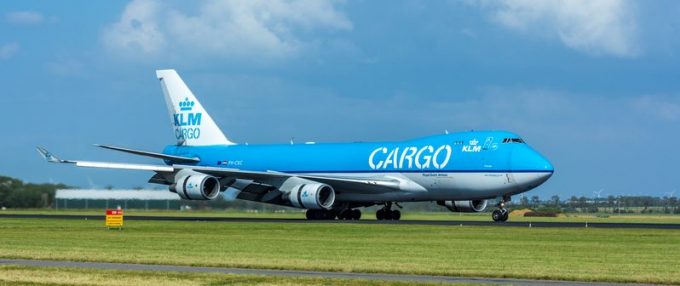Mayerline Santamaria Neira named Leschaco Colombia's new MD
German air and sea freight forwarder Leschaco has appointed Mayerline Santamaria Neira (above) as the ...
TFII: SOLID AS USUALMAERSK: WEAKENINGF: FALLING OFF A CLIFFAAPL: 'BOTTLENECK IN MAINLAND CHINA'AAPL: CHINA TRENDSDHL: GROWTH CAPEXR: ANOTHER SOLID DELIVERYMFT: HERE COMES THE FALLDSV: LOOK AT SCHENKER PERFORMANCEUPS: A WAVE OF DOWNGRADES DSV: BARGAIN BINKNX: EARNINGS OUTODFL: RISING AND FALLING AND THEN RISING
TFII: SOLID AS USUALMAERSK: WEAKENINGF: FALLING OFF A CLIFFAAPL: 'BOTTLENECK IN MAINLAND CHINA'AAPL: CHINA TRENDSDHL: GROWTH CAPEXR: ANOTHER SOLID DELIVERYMFT: HERE COMES THE FALLDSV: LOOK AT SCHENKER PERFORMANCEUPS: A WAVE OF DOWNGRADES DSV: BARGAIN BINKNX: EARNINGS OUTODFL: RISING AND FALLING AND THEN RISING

Shippers are facing more increases in airfreight costs as the surge in oil prices lifts carrier fuel surcharges.
And the airlines themselves face a dilemma over fuel price hedging.
The price of oil gushed through the $75-a-barrel mark on 13 July after two and a half years – it had been nudging upward this year and so far has gained about 43%.
Inevitably, that has pushed up not only the airlines’ fuel costs, but also the amount customers pay, as the carriers have kept fuel surcharge mechanisms in play throughout the pandemic.
“We work on principle […] with an airfreight surcharge, with which we make the cost development of fuel and safety transparent for our customers, and pass this on,” said a spokesman for one European airline.
A senior executive of a North American cargo airline said its surcharge had gone up several times in recent months, while the fuel surcharge of one large European carrier slipped in April, but climbed in May and July.
After the bitter experiences of price-fixing charges and convictions, the carriers are not eager to talk about aspects of pricing, but forwarders report elevated fuel surcharges – and not from isolated carriers.
“We are seeing this across the board. It’s not limited to a few carriers,” confirmed a spokesman for DHL Global Forwarding, while a senior executive of a US-based forwarder noted: “We anticipate it will become more widespread and the increases can be significant in the near future.”
For the airlines, the question is whether it’s time to review their fuel hedging strategy.
The slump in oil prices and in their passenger business was a double-whammy on carrier balance sheets last year, especially if they had hedged to a significant extent at elevated levels. In the first half of 2020, European airlines lost about $4.6bn to the differential between their hedge and the current price of oil, while their counterparts in the Asia-Pacific region suffered hedging losses of $3.2bn.
These blows convinced airlines to review their hedging programmes. By one estimate, this has reduced their average hedging exposure by 24%. IAG trimmed its hedging to 60% of requirement from 90%.
Airlines have also reduced the length of their hedging. IAG has signalled it’s broadly looking at a range of two years out, down from three years, and Air France-KLM says it only hedges 12 months forward.
And some are doing away with fuel hedges altogether. Lufthansa Cargo has not used a fuel hedge for years and this has not changed, a company spokesman said.
Until recently, predictions were for an inexorable continuation of the upward trend in oil prices, but on 19 July it abruptly dropped below $70 a barrel, owing to concerns about the spread of Covid and the agreement by OPEC states to increase output.
That gave airline finance chiefs who were contemplating stronger hedging pause for thought.
Cathay Pacific was one of the airlines that got hit by hedges in 2020, but the carrier’s management eschews short-term action.
“We have a prudent fuel hedging policy in place, with a clear pricing matrix that governs the hedges we make based on the prevailing price and our forecast usage. That policy remains in place irrespective of the price of fuel, and we execute accordingly,” said Myra Lee, assistant manager of cargo marketing.
Comment on this article